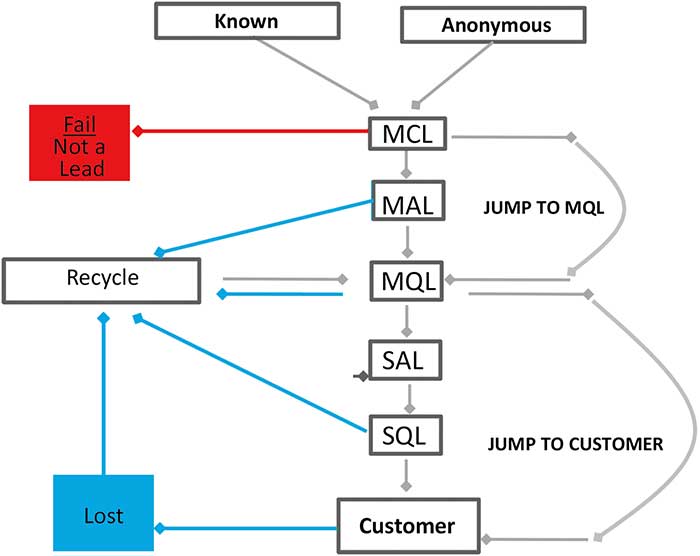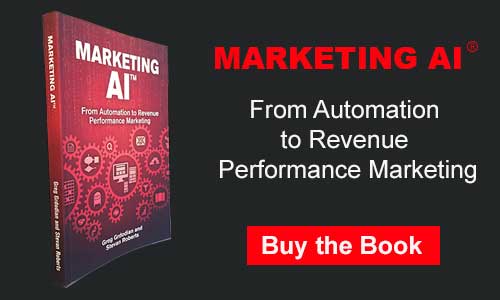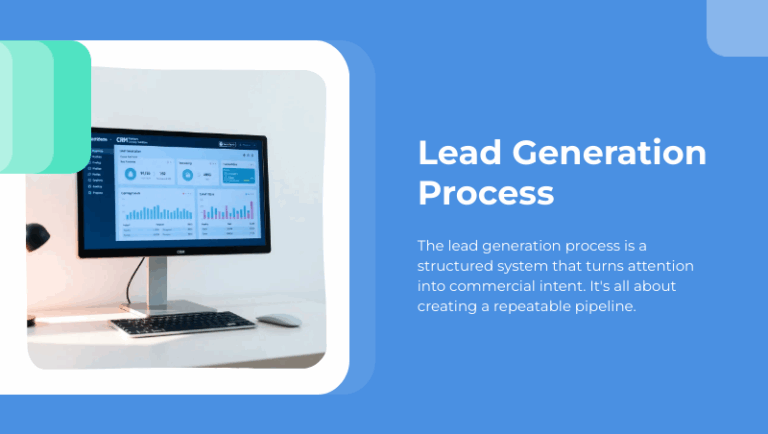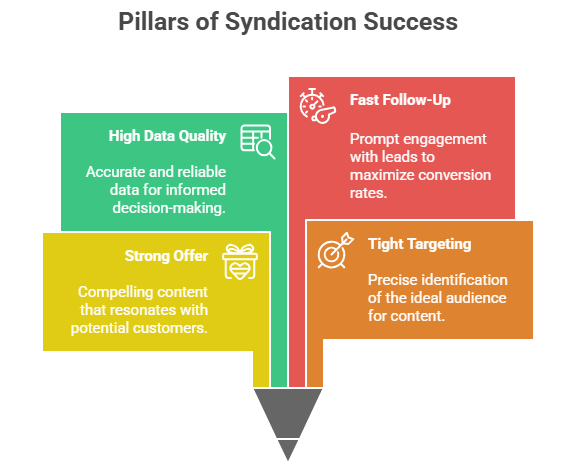
Much of human history has been about developing better and more efficient tools. AI is designed to do the same thing for the mind that tools do for the body, improving our ability to see relationships, coordinate communications, spot opportunities, and assess risks. Marketing automation acts as such an effective force multiplier for your marketing efforts that it’s useful to look at the combination of your marketing team’s ingenuity and a marketing automation system (MAS) as the first steps toward a complete AI.
MARKETING AI® perceives its environment and automatically triggers actions that maximize your company’s best chances for success. Marketing automation provides you with a complete, integrated, intelligent user interface that unifies your marketing, from lead generation to content coordination to analytics. It nurtures your prospects with the right information delivered at the right time and increases the speed at which qualified prospects convert into profitable customers. Implemented correctly, your MARKETING AI® adapts and creates ever-improving revenue performance by learning the processes, campaigns, content channels, and timing that increase success.
In the past, it would have been impossible to know the sequence or combination of marketing materials that successfully converted a prospect into a customer. The Internet has provided a critical intelligence capability that allows computers to track and analyze both anonymous and known prospects’ behavior — how they found your company, the web pages they’re viewing, what’s resonating, and what they respond to — even before your sales team knows its leads’ names. The data that your AI uses to gain knowledge comes in at lightning-fast speed, and it goes through the process far more quickly than any human mind can.
The Evolution of Marketing

In the early days of marketing, prospective customers first learned about your product or service through separate, often disjointed campaigns that included space advertising, direct mail, TV, and outbound telemarketing campaigns. Once a prospect became interested, it was the job of the sales team to explain the benefits and differentiate the brand enough to make a sale. Sellers learned through trial and error which responses to different sales situations produced the best results. The human mind is very good at such adaptations, but even the best brains in the business couldn’t accurately correlate information about customers’’ behavior and demographic data with marketing techniques. To do that required a technological leap forward.
Sales and marketing departments have also undergone a huge shift in the amount of information they have to manage. What may have been possible when a business received a handful of sales leads each day is no longer viable because companies process thousands or even hundreds of thousands of buy signals each day—many times faster than the organization sales teams can adapt to. As a result, sales and marketing teams have become overloaded.
The information revolution swept through countless industries, but few have been as completely transformed as marketing. Instead of the top-down, one-way model of communication with almost no visible feedback from customers that was the marketing model for decades, businesses are now in constant connection with their prospects and customers. Maintaining that connection and guiding conversation have become the challenges of 21st-century marketing.
This revolution is comparable to a previous seismic shift that happened more than half a century ago when advertisers made the move from radio to television. Suddenly, getting your message across was more than just a matter of making it sound good; it also had to look good. This new dimension revolutionized how companies marketed themselves and their products, and by extension, it changed how marketing companies operated.
The old top-down concept of marketing to a largely silent, uninvolved audience is as outmoded as radio jingles became in the age of television. Today, marketing’s new dimension is in a virtual realm, and it’s as reliant on technology as it is on creativity. Technology has opened up new marketing channels via email, SEO, social media networks, blogs, video, and other content.
It can also give marketers a panoramic view of an industry using big data and analytics that make sense of it. The key to your organization’s stability and growth is being able to scan the entirety of a market, create customer profiles to discover who your audience is, identify prospects with the greatest potential, draw a marketing blueprint, execute your plan, and analyze the data from every campaign. To accomplish this, you need both creative vision and the technology to implement it.
A MARKETING AI® Blueprint
Implementing marketing automation is the key to every phase of the marketing cycle, from discovery through execution and analysis. Many companies offer automation software, but there’s a huge difference between installing automation software and creating a reliable Marketing AI. In this book, we explain how you can combine central intelligence, best practices, modern marketing channels, and automation strategies with MARKETING AI® to produce a winning marketing program — your marketing AI blueprint.
The Marketing Lead Lifecycle
The marketing Lead Lifecycle sometimes referred to as the sales funnel, is the grand, unified theory of contemporary marketing and is guided and tracked at every step by your MARKETING AI®. It’s the stage that each lead enters, from the moment it begins to interact with you until the deal is closed. But the Lead Lifecycle concept doesn’t exist in a vacuum: It’s linked to your content development, your leads’ sales readiness, and your nurture campaigns. It connects every aspect of your marketing efforts into one cohesive process that from the outset adapts and responds to improve the conversion of a lead from prospect to customer.

There are three phases — discovery, execution, and analysis — that comprise the Lead Lifecycle.
Discovery
Before you can reach your customers and guide their path through your sales funnel, you need to know who they are. Creating a central intelligence alignment is key here because the discovery phase is largely data-driven, and your MAS excels at dealing with data and at streamlining the discovery process. It’s the “who” and “what” of marketing, the beginning of a buyer’s journey, and the earliest information that your AI processes. With your MARKETING AI®, your data-science team can dig deep into the numbers that represent your audience and the budget you’re allocating to reach it. This initial step includes data normalization (to standardize all your data fields, values, and elements); data hygiene (to identify and purge inactive records); data integrity (to lend depth to raw numbers and create a more realistic image of your ideal customer base); and enhancement (to define your audience more precisely).
Even though marketers acknowledge the importance of discovery, most of them view it as dull housekeeping. Fortunately, marketing automation software does most of the heavy lifting, removing routine tasks from the discovery process. Discovery translates directly into improving your relevance, and relevance is critical to your marketing efforts, especially when you’re reaching your audience digitally. You can’t be relevant to your audience until you understand its needs, and that starts with effective profiling. The discovery process helps crystallize your knowledge of your audience so that you can communicate your benefits to it. Along the way, you’ll also uncover important details about your own strategy. Defining your goals with the campaign is essential to your marketing and technology teams as you move to the next phase of your marketing plan.
Once you know more about your audience through demographic, firmographic, behavioral, and contextual data, marketing specialists and data scientists work together within your MARKETING AI® to design and build your marketing strategy’s infrastructure. Many marketing departments want to rush headlong to this phase, thinking it’s where the fun begins, but without the essential analytics from the early discovery phase, no creative push you make will have much impact. This is where your Marketing AI truly shines because it lets you move the building blocks of your campaign around to construct a sturdy frame-work for success.
The early steps of the discovery phase tell you who you want to reach and how you want to connect; the later stages are a blueprint that outlines precisely how you’ll get there. Automation lets you define every part of your blueprint with customizable flows that guide prospects through your marketing pipeline. After you have your plan, it’s time to put it into action.

Execution
Even the best planning won’t mean a thing if your execution doesn’t produce the right content for the right person at the right time. Your technology and data scientists have done their work, and in the execution phase, creative takes over and shines. Your content creation team produces compelling content, and your MAS routes it to where it needs to go and gathers behavioral feedback on how your audience interacts with it. Different content streams go to different leads at different phases of their buying journeys in a dance so complex, you need a Marketing AI to coordinate its steps.
Building solid landing pages, developing your SEO, coming up with outstanding email creative and compelling copy are all key parts of execution, and you’ll learn extensive process details about each of these elements. Is no one opening your email or reading your blog? Are you getting too little traffic for the amount of time and effort you’ve invested in SEO? What are the differences between web-based content and print media? How do social networks fit with your marketing plan? These are some of the questions your marketing team needs to answer and correct to see growth.
Analysis
Every campaign generates data, and data is incredibly valuable. With it, you can achieve greater relevance to your audience, expand your brand, and save money by cutting what doesn’t work.
You can cross- and upsell more effectively with deeper analysis. Attribution shows data analysts where your traffic is really coming from and where it’s going, and marketing automation plays an essential role in it. This phase is the last step in the previous marketing campaign’s lifecycle, and it also transitions seamlessly into the first step of your next campaign, generating data you can then use to improve your discovery process.
Content and data that are isolated from each other will lack relevance. Only when brilliant creative and mountains of data come together with the technology to make sense of that data and sharpen your creative edge do you get the kind of marketing that works in a modern context. We’ve developed a way to preplan your strategy while fusing creative and technology into a whole that’s greater than the sum of its parts.
A MARKETING AI® Mindmap
In this series MARKETING AI®: From Automation to Revenue Performance Marketing, you’ll learn much more about what marketing automation is, what it isn’t, and where it fits into a marketing strategy. You’ll also discover more about traditional marketing through the lens of automation and read a compelling case study about how one company went from finding itself in a marketing dead zone to flourishing as an automated, intelligent, and responsive organization that converted its old marketing plan into a revenue marketing strategy.
©2021 Reach Marketing, LLC. All rights reserved. MARKETING AI is a registered trademark of Reach Marketing, LLC




